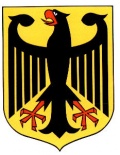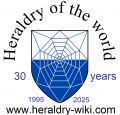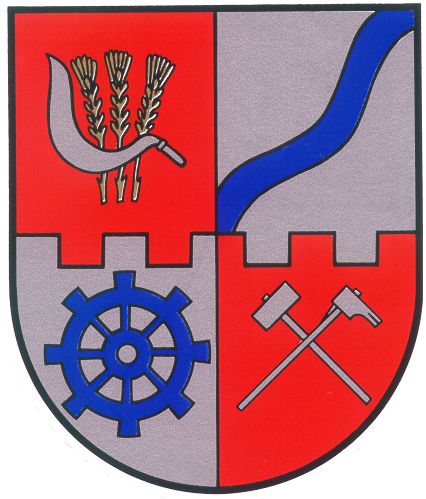Borod (Westerwaldkreis): Difference between revisions
Knorrepoes (talk | contribs) m (Text replacement - "{{de1}}↵" to "") |
Knorrepoes (talk | contribs) m (Text replacement - "{{media}}" to " {{de1}} {{media1}}") |
||
| Line 28: | Line 28: | ||
{{ | |||
{{de1}} | |||
{{media1}} | |||
[[Civic Heraldry Literature - Germany|'''Literature''']]: - | [[Civic Heraldry Literature - Germany|'''Literature''']]: - | ||
Revision as of 11:32, 26 December 2022
This page is part of the German heraldry portal Deutsche Wappensammlung |
Heraldry of the World |
|
German heraldry:
|
Selected collector's items from Germany:
|
BOROD
State : Rheinland-Pfalz
District (Kreis) : Westerwaldkreis (until 1974 Oberwesterwaldkreis)
Verbandsgemeinde : Verbandsgemeinde Hachenburg
| German |
Durch Zinnenschnitt geteilt. Oben von Rot und Silber, unten von Silber und Rot gespalten. Oben vorn drei goldene Ähren, überdeckt von einer silbernen Sichel, hinten ein schräglinker blauer Wellenbalken. Unten vorn ein achtspeichiges blaues Mühlrad, hinten gekreuzt silbern ein Schlegel und eine Rodehacke. |
| English | (Westerwaldkreis) No blazon/translation known. Please click here to send your (heraldic !) blazon or translation |
Origin/meaning
The red colour refers to the County Sayn-Hachenburg, to which the area belonged until 1799. In the 19th century the area was part of the Duchy of Nassau, and the blue colour is the colour of Nassau.
The first quarter refers to the agricultural character of the village. The second quarter symbolises the Wied river, which flows through the municipality. The blue water mill wheel refers to the historical mwater mill in the Wied river. The miner's tools refer to the slate mining in the region.
The division line refers to the unique situation that Borod had a (city)wall until 1782, even though it never received any town or city rights.
Literature: -


